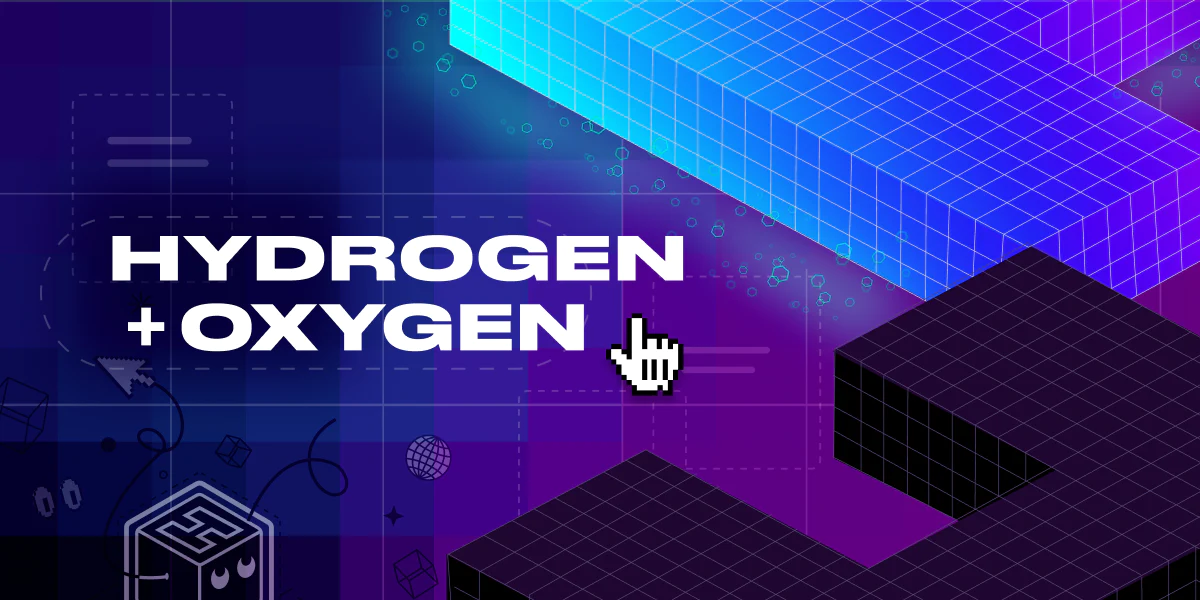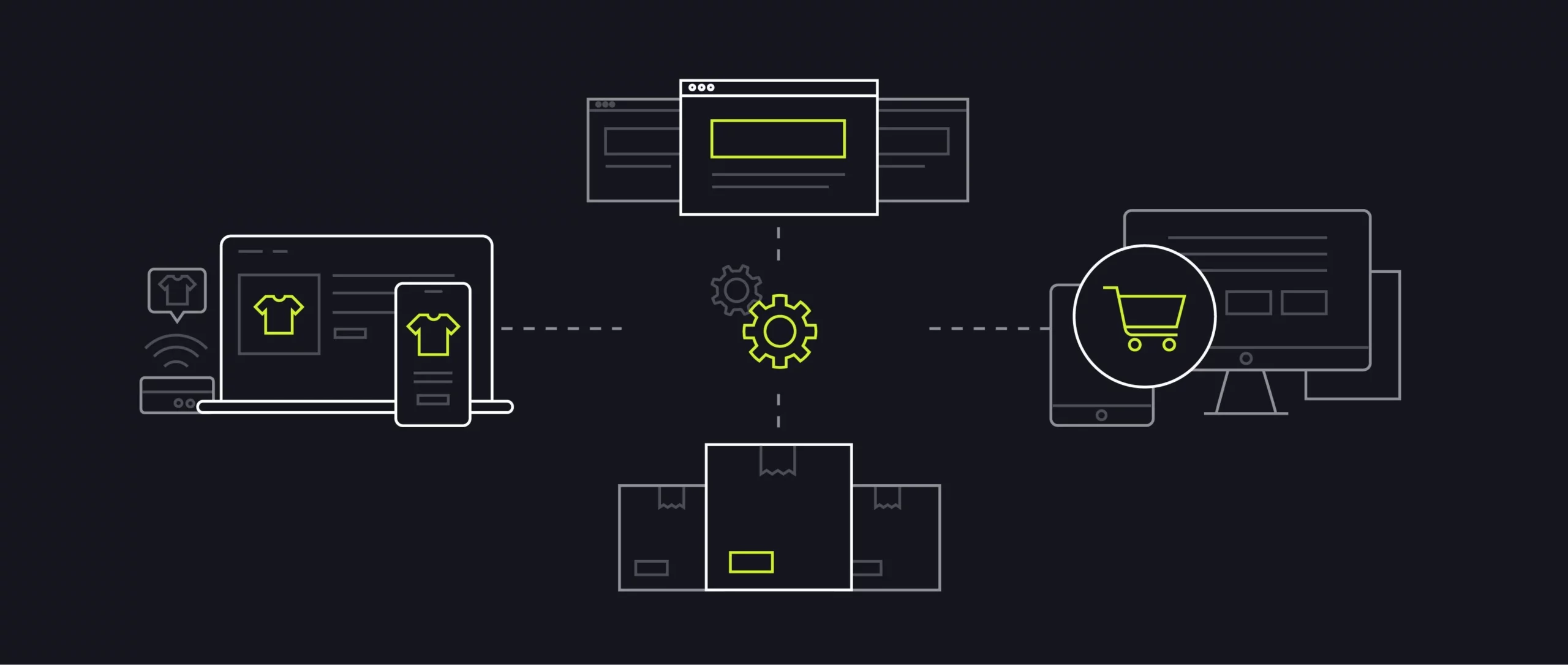Staying ahead of the game is crucial for e-commerce businesses striving to achieve success. As one of the leading platforms empowering online merchants, Shopify has consistently proven its commitment to innovation and continuous improvement.
With the arrival of 2023, Shopify and its enterprise version, Shopify Plus, have introduced a host of groundbreaking features designed to revolutionize the way complex businesses operate, enhance customer experiences, and drive unprecedented growth.
Whether you are an aspiring entrepreneur looking to launch your first online store or a seasoned enterprise seeking to scale your Shopify flow, these new features will undoubtedly pique your interest and open up a realm of possibilities.
So, let’s delve into the world of Shopify and Shopify Plus to discover the latest tools and functionalities that are reshaping the e-commerce industry. 🎯
Overview of Shopify vs. Shopify Plus Features in 2023
There are many changes on the horizon. Shopify and Shopify Plus have set the stage for an exhilarating year of innovation in the e-commerce online presence – from cutting-edge technology advancements to enhanced customization options.
The combination of these tools and technology empowers businesses to create an exceptional online shopping experience. Instead of depending on external Shopify partners, their solution seamlessly integrates with Shopify Plus, elevating your store’s capabilities.
This year Shopify provides merchants with advanced e-commerce Functions, Shopify Magic, enhanced returns, and commerce components. Did we also mention some powerful marketing automation tools?
But there are also some fresh new features for Shopify Plus development.
Shopify caters to larger businesses with higher demands and offers flexible APIs, streamlining B2B and wholesale operations and infrastructure for custom checkout.
⭐Shopify New Features
- Shopify Functions,
- Product Bundles,
- One-page checkout,
- Commerce Components,
- Shopify Magic,
- Optimized image rendering,
- Marketing automation,
- Advanced returns functionality.
⭐Shopify Plus New Features
- Customizable checkout,
- Streamlining B2B and wholesale operations,
- Themes.
Latest Updates for Shopify Merchants and Customers in 2023
#1 Revolutionizing Customization: The New Checkout Extensibility Update on Shopify
This Shopify checkout update is huge for e-commerce businesses. It offers enhanced flexibility and customization options, transforming the checkout experience. Thanks to removing Checkout.liquid and Shopify Scripts, businesses can now customize promotions and discounts to fit their specific needs.
The update introduces features like:
- global cart,
- branding API,
- one-page checkout,
- app extensions,
- and Shopify Functions,
streamlining the process for businesses, customers, and developers.
🥇 What are the benefits for merchants?
These updates affect all merchants, providing an opportunity to tailor the checkout process to their customers’ needs. You definitely should get interested in this new technology, as the old checkout will deprecate by August 13, 2024.
#2 Next-Level Commerce: Unveiling Enterprise-Grade Commerce Components
Shopify has also introduced new enterprise-grade commerce components for every enterprise store owner. The Commerce Components break down pre-built aspects into micro offerings that can be seamlessly integrated into larger tech stacks, providing enterprise-level brands with unparalleled flexibility beyond the “out of the box” solutions.
Key features include:
- headless capabilities for immersive user experiences,
- flexible checkout and payment options,
- open API access for integrations,
- and robust omnichannel capabilities for cross-channel selling.
These updates demonstrate Shopify’s commitment to meeting the needs of businesses of all sizes, including enterprise-level brands, and solidify its position as a leading e-commerce platform, competing with other enterprise platforms like Magento and Salesforce.
Such focus on flexibility and customization empowers large brands to tailor their online storefronts to their specific requirements, integrating external systems into their commerce stack for a more personalized customer experience.
🥇 What are the benefits for merchants?
This update offers enhanced flexibility and customization options for merchants. With over 100 product updates, Shopify wants to help merchants and developers build for the long term with features such as deeply integrated sales channels, faster page loads, and one-page checkouts.
#3 Enhanced Bundle Creation and Complex Discounts on Shopify
You will find another update regarding bundle creation and complex discounting capabilities.
The update includes new discounting apps built on the preferred Functions framework, providing merchants with advanced tools to create compelling promotions. Shopify is also about to launch bundling apps, offering early access to interested users.
Moreover, upcoming features like channel-specific discounts and combining discount codes will further enhance promotional capabilities. These new features are significant for all those who are seeking a competitive edge in promotions.
The increased flexibility in creating campaigns enables merchants to:
💪 curate discounts to target specific audiences,
💪 attract the right customers to their store,
💪 and drive sales revenue.
With Shopify’s new approach to discounting, companies of all sizes can create customized promotions that align with their specific needs, enabling them to stay competitive in the dynamic e-commerce landscape.
🥇 What are the benefits for merchants?
This feature offers merchants more flexibility and customization options, allows them to create product bundles easily, and provides discounted prices to customers who purchase multiple items. As a result, it increases sales and revenue.
These updates can empower businesses to provide value to customers and thrive in the e-commerce market.
#4 Shopify Magic: AI-Powered Product Descriptions for Unbeatable Sales
What about AI product descriptions? Yes, you will find them also! Shopify has introduced AI-Powered Product Descriptions powered by Shopify Magic, their artificial intelligence tools for commerce.
Millions of products on Shopify lack descriptions, and these descriptions play a vital role in customer decision-making. Simply by providing a few product details or relevant keywords, merchants can automatically generate descriptions right on the product setup page in their store’s admin.
The convenience extends to the Shopify mobile app, enabling merchants to generate, revise, or expand descriptions on the go.
Moreover, Shopify plans to enhance more tools with Shopify Magic in the future, providing further AI-powered benefits to merchants.
🥇 What are the benefits for merchants?
This feature allows merchants to generate high-quality and compelling product descriptions in a matter of seconds. With well-crafted product pages and descriptions being crucial for early success, this tool helps save time, attract more shoppers, and increase conversions.
Merchants can now use large product catalogs, allowing them to generate enticing and consistent product descriptions quickly. With AI handling the writing, merchants can focus more on running their businesses.
#5 Streamlining B2B and Wholesale Operations on Shopify
Shopify Plus has streamlined B2B and wholesale operations with its latest updates, addressing the growing importance of these segments for commerce businesses.
Now you can meet the needs of your B2B customers with:
👉 quantity rules,
👉 curated catalogs,
👉 and customized checkout options.
Quantity rules enable businesses to set order quantity limits, while curated catalogs allow merchants to create customized product catalogs tailored to their B2B customers. The ability to customize the checkout process offers payment options like purchase orders and net terms, commonly used in B2B transactions.
Additional enhancements, such as customer-specific product publishing, easy reordering, and metafields for customers and location, provide commerce businesses with more efficient wholesale selling capabilities.
🥇 What are the benefits for merchants?
Shopify B2B solutions empower merchants to improve their B2B operations and provide a personalized experience for their customers and partners.
By delivering the expectations of B2B buyers and offering DTC-style experiences, merchants can foster continued loyalty and success in the competitive B2B market.
#6 Introducing Hydrogen 2 for Next-Level Headless E-commerce

Shopify’s Hydrogen 2, a Shopify’s innovation of headless commerce framework, brings next-level capabilities for enterprise-level brands.
By decoupling the front-end and back-end of online stores, Hydrogen 2 empowers businesses to use external front-end CMS technologies. It offers greater flexibility in design and immersive customer experiences while leveraging the Shopify store’s robust backend features like inventory management and payment processing.
Although Hydrogen 2 is still in its early stages, it presents an exciting opportunity for large businesses seeking more control over their online storefronts.
🥇 What are the benefits for merchants?
The ability to integrate external CMS technologies provides merchants with enhanced flexibility and customization options, enabling them to create unique and engaging customer experiences.
As the platform evolves, businesses can leverage Hydrogen 2 to stay at the forefront of e-commerce innovation and deliver exceptional online shopping experiences.
#7 Unlocking Endless Possibilities: Exploring the Power of Shopify Functions
Shopify has announced that Shopify Scripts will be discontinued on August 13, 2024, and will be replaced by Shopify Functions. Merchants using Shopify Scripts apps will be required to transition to apps powered by Shopify Functions before the specified deadline.
They offer enhanced flexibility and efficiency for businesses, customers, and developers.
Functions now provide customization options for:
- Product Bundles,
- Order Routing logic,
- and Checkout Validation rules,
complementing existing customizations for Discounts, Delivery, and Payments.
Shopify Functions introduces a revolutionary method for creating unique commerce experiences by allowing developers to inject custom code into Shopify’s backend logic. With Functions running on Shopify’s global infrastructure, they can handle large-scale sales events while maintaining rapid execution.
🥇 What are the benefits for merchants?
This transition is particularly relevant for merchants seeking streamlined customization options without extensive coding knowledge.
#8 Shopify’s Optimized Image Rendering and Focus for Visual Perfection
The recent update in Shopify introduces optimized image rendering, focusing on both image quality and file size. Thanks to image optimization, the speed of your store improves, leading to increased conversion rates.
Moreover, merchants now have the ability to select a focal point on images. When uploading images to Shopify, the platform automatically optimizes the file size without compromising the visual quality, resulting in faster page load times.
Shopify also intelligently detects the supported file formats on the client side and delivers the best option, such as converting images to WebP or AVIF when supported and using JPG as a fallback for other clients. This new feature allows you to crop and transform images through URL parameters while preserving the original file.
🥇 What are the benefits for merchants?
These enhancements provide merchants with greater control over image optimization, leading to improved user experience and website performance. They can ensure that their products are prominently displayed and have high quality.
#9 Win Back Your Customers: Discover Shopify’s New Re-engagement Automation
Shopify has also introduced updates to enable automation for re-engagement, empowering merchants to reach out to customers who have abandoned their carts efficiently, left the checkout process incomplete, or browsed products without making a purchase.
These marketing automations can be seamlessly integrated into existing workflows using Shopify Email. With a user-friendly trigger-condition-action interface, merchants can create custom automation tailored to their specific business requirements.
Ready-to-use templates are available, covering various scenarios such as:
- welcome emails,
- winback campaigns,
- and first-purchase upsells.
Leveraging Shopify’s infrastructure ensures the timely delivery of messages, and conditions can be set to optimize targeting.
The automation process includes customizable email templates that reflect the merchant’s branding. Actionable reports provide insights into email engagement and sales performance.
🥇 What are the benefits for merchants?
Utilizing these automations gives more insights and lets merchants save time and effort by streamlining their email campaigns while effectively re-engaging customers and driving conversions.
#10 Returns Made Easy: Introducing Built-in Return Functionality on Shopify
And, of course, Shopify has introduced updates to its returns process, offering several benefits for merchants. This new feature aim is to streamline returns by providing built-in functionality for faster processing.
With the integration of Loop Returns, instant exchanges, and credits can be offered to customers, enhancing their experience.
Based on product-level preferences, merchants can determine whether returned items should be restocked or disposed of. This empowers them to set their own return rules, track orders and the status of returned items, enabling them to provide smooth and prompt refunds, build customer trust and minimize return costs.
Undamaged products can be restocked as sellable inventory after passing an inspection based on merchant guidelines.
🥇 What are the benefits for merchants?
These updates optimize the returns process for both merchants and customers, improving efficiency and satisfaction. Customers can now submit return requests directly through the online store, and merchants can manage these requests efficiently in the Shopify admin.
Shopify App Store Changes and Customization Options for Your Online Store in 2023
In 2023, Shopify is introducing exciting changes, customization options, and a redesigned interface for online stores in the Shopify App Store.
These updates aim to boost conversion rates and enhance the overall shopping experience. Enhancing your Shopify website design has never been easier.
Also, the new navigation and app categories offer more educational resources, helping you address specific business challenges. The Built for Shopify program highlights high-quality apps that meet Shopify’s standards for exceptional commerce experiences, providing increased visibility and growth opportunities.
Popular apps such as Shopify Email, Google & YouTube, Pinterest, Shopify Search & Discovery, Shopify Translate & Adapt, and TikTok are widely used by merchants across the Shopify platform, and you will have better access to them.
How does it benefit merchants?
Merchants can access guidance on building great apps and benefit from improved performance reporting. With personalized recommendations, related searches, and improved shop app listings, it’s easier than ever to find the right apps and achieve goals for every fastest-moving commerce company.
New Shopify Themes and Designs
Looking for new themes or designs? If so, you will be happy to hear that you can customize your online store theme without editing any theme files. Also, a color style can now be added to a theme.
This update brings clarity and flexibility to Shopify theme development as it:
- enables theme-defined and merchant-defined color schemes,
- adds a visual preview that makes updating theme colors a lot easier,
- and allows theme changes to be implemented at the global, section, and block levels within a theme.
So, later this summer, theme developers will be able to specify how to migrate merchants’ theme data during the update process (ex: changing settings scope, modifying schema structure in other ways, etc.).
Custom Apps Development Trends to Watch for in Shopify
#1 Great Mobile Checkout Experience
The focus on enhancing the mobile commerce and checkout experience is crucial. Shopify’s Checkout UI Extensions and Functions provide powerful tools for customizing and streamlining discount and checkout logic, benefiting both Plus and non-Plus merchants.
These options enable Shopify Partners to create efficient apps for sale in the Shopify App Store, resulting in faster development and a consistent customer experience.
#2 Ready-made Themes
Secondly, leveraging themes to improve workflow efficiency is gaining traction. Shopify developers are increasingly utilizing add functionality components to augment existing themes, reducing the need for building everything from scratch.
This approach simplifies code updates and facilitates the integration of custom sections alongside pre-built sections, making maintenance more manageable and reducing technical debt.
#3 Headless Commerce

Lastly, headless commerce, particularly the adoption of Shopify’s Hydrogen and Oxygen frameworks, is expected to expand. This entails building custom storefronts using Hydrogen and leveraging Oxygen as a hosting platform.
Composable architectures, like unified content platforms and deep integration of personalization and recommendation engines, enable dynamic content experiences and improved customer engagement. Better A/B testing and feature-flagging capabilities also provide valuable insights into buying behavior.
By leveraging these trends, Shopify app development can be optimized, resulting in a better user experience and increased business growth.
The Impact of New Features on Ecommerce Success
As you can see, your online store can benefit much if you decide to take advantage of more functionalities. All Shopify merchants and partners can boost customer engagement, generate flash sales, improve mobile commerce, and much more with new possibilities.
Contact WeCanFly if you need any help with the Shopify store, and we will help you touch the sky.





